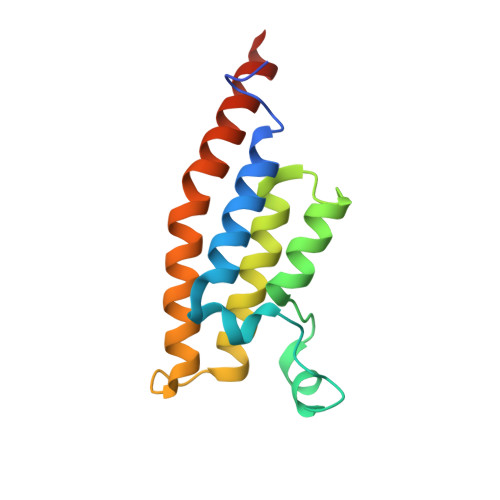A poised fragment library enables rapid synthetic expansion yielding the first reported inhibitors of PHIP(2), an atypical bromodomain.
Cox, O.B., Krojer, T., Collins, P., Monteiro, O., Talon, R., Bradley, A., Fedorov, O., Amin, J., Marsden, B.D., Spencer, J., von Delft, F., Brennan, P.E.(2016) Chem Sci 7: 2322-2330
- PubMed: 29910922
- DOI: https://doi.org/10.1039/c5sc03115j
- Primary Citation of Related Structures:
5ENB, 5ENC, 5ENE, 5ENF, 5ENH, 5ENI, 5ENJ - PubMed Abstract:
Research into the chemical biology of bromodomains has been driven by the development of acetyl-lysine mimetics. The ligands are typically anchored by binding to a highly conserved asparagine residue. Atypical bromodomains, for which the asparagine is mutated, have thus far proven elusive targets, including PHIP(2) whose parent protein, PHIP, has been linked to disease progression in diabetes and cancers. The PHIP(2) binding site contains a threonine in place of asparagine, and solution screening have yielded no convincing hits. We have overcome this hurdle by combining the sensitivity of X-ray crystallography, used as the primary fragment screen, with a strategy for rapid follow-up synthesis using a chemically-poised fragment library, which allows hits to be readily modified by parallel chemistry both peripherally and in the core. Our approach yielded the first reported hit compounds of PHIP(2) with measurable IC 50 values by an AlphaScreen competition assay. The follow-up libraries of four poised fragment hits improved potency into the sub-mM range while showing good ligand efficiency and detailed structural data.
Organizational Affiliation:
Structural Genomics Consortium (SGC) , University of Oxford , Oxford OX3 7DQ , UK.

















